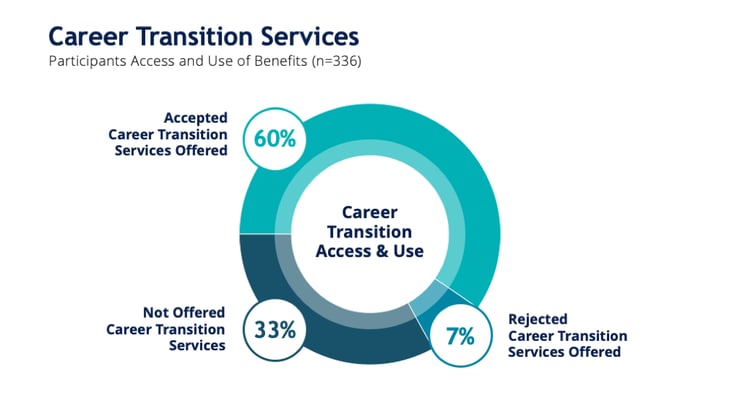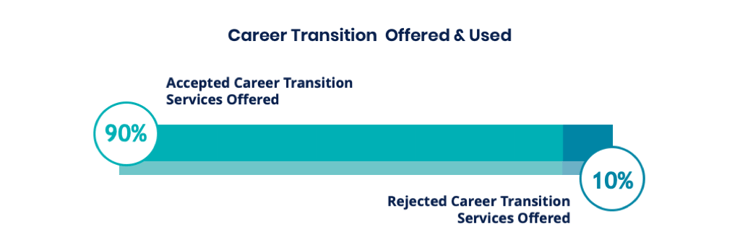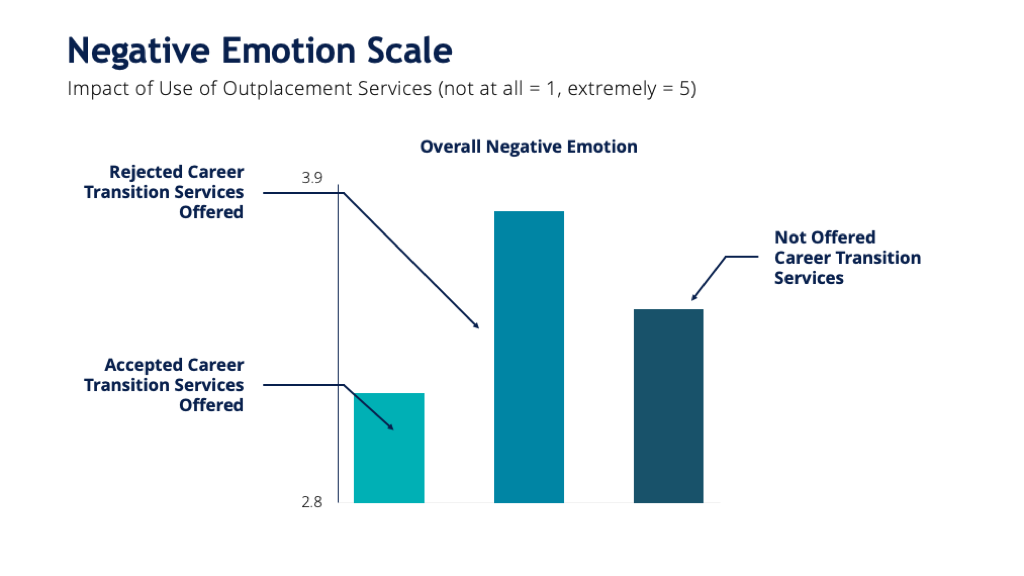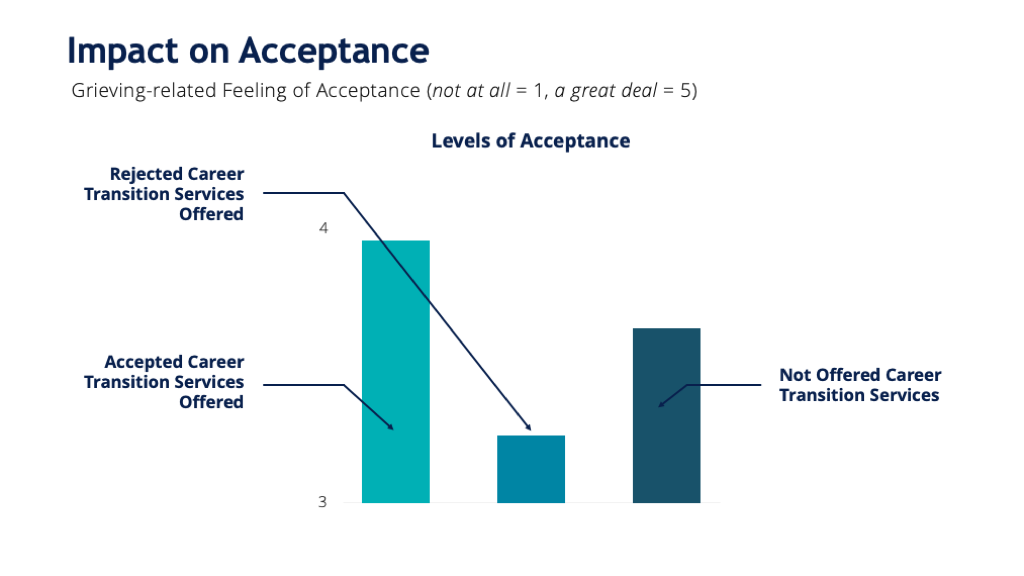
Losing one’s job can be an overwhelming and stressful experience of loss and change in ordinary times. These are, however, extraordinary times. As the COVID-19 pandemic evolves, millions of people have entered this emotional journey of unemployment with the added stress and anxiety of a very uncertain world—as it relates to personal safety and health, and the trajectory of the job market and economy.
As empathetic business leaders and HR professionals, we know we cannot eliminate the negative emotions of employees impacted by a layoff or termination; however, research reveals we can help.
The Emotional Rollercoaster
Waldron, a Seattle-headquartered talent & career management firm, conducted a survey consisting of 336 respondents who had experienced a recent job loss from reduction-in-force (RIF) or individual termination. They described a rollercoaster of emotions experienced, from initial shock and anger to varying paths of processing grief and change. Fortunately, more than two-thirds (67%) of respondents were offered career transition (also known as outplacement) services, and ninety percent (90%) accepted the benefits offered, which in many cases, helped significantly reduce the negative emotions felt.


The strongest emotions shared in the study were of being upset and angry. As with other models of loss and change, these are often the first negative reactions to job loss, along with potential feelings of shock and denial. These feelings are usually followed by the next highest degree of emotions shared by the study's participants: uncertainty, anxiety, and worry.
Lowering Negative Emotions
When career transition services were accepted and used by impacted individuals, they experienced lower negative emotions compared to those who did not take up these services or were not offered such benefits. Within the study, seven emotional reactions were measured: upset, uncertain, anxious, embarrassed, ashamed, angry, and relieved (reverse scored). The set of emotions was combined into a “negative emotion scale.” The scale is an overall measure of how strongly people felt negative emotions at the time of their job loss.
 In using outplacement services, the negative emotions which decreased the most were feeling ashamed, angry, embarrassed, and upset. This decrease was true whether the impacted employee was offered outplacement services as part of a RIF or individually terminated.
In using outplacement services, the negative emotions which decreased the most were feeling ashamed, angry, embarrassed, and upset. This decrease was true whether the impacted employee was offered outplacement services as part of a RIF or individually terminated.

Employer actions which were most effective in lowering the negative emotions included:
Providing Advance Notice
Those who provided advance notice of being laid off were more likely to have warmer feelings toward their former employer and felt less anger.
Complete Explanation
Those who felt the reason for termination was fully explained resulted in warmer feelings toward former employer and transitioned quicker in landing subsequent employment.

Though individuals held better feelings toward their former employer when let go in-person as a group versus by other means, remote layoff or termination notification only made a small difference in the impacted employee’s emotional experience.
If you are seeking guidance on how best to prepare and communicate layoff or termination, download our Manager’s Guide to Conducting Notification Meetings.
Career Transition and Outplacement Services' Role
When working with employers, career transition experts help in preparing managers to effectively deliver notifications to impacted employees. Good processes and communications during the early stages help to reduce initial feelings of shock and denial and lead toward quicker acceptance. This bridges the experience from job loss to job search. This consulting extends to how terminations are communicated to employees who remain, to fortify morale and productivity.
For impacted employees, career transition and outplacement services help them work through the emotions of both the job loss and job search so they can focus on their plan of action in obtaining new employment. It does this by providing displaced employees invaluable support and coaching,
Related reading: Rebuilding Displaced Employees

Having someone to talk to throughout the job search, such as a career coach, provides useful emotional support, beyond what may be received from friends and family. Career coaches’ expertise in the job search process also helps normalize the experience and feelings across the entire career transition journey. They become sounding boards to help guide fluctuating feelings, fortify confidence, and encourage action. In combination with group activities, the sense of partnership and community helps minimize feelings of loneliness and provides further tangible benefits in advancing the job search.
Additionally, survey respondents that used career transition services had higher levels of acceptance versus those choosing not to use the benefit and those not offered such service.

To learn more about other benefits of hiring career transition experts, read our article The ROI of Career Transition and Outplacement.
Employers Tuned into Emotions
Within this current volatile environment, laying off employees may be the only way to keep an organization viable until this uncertainty subsides. As leaders and HR professionals, you cannot eliminate the emotional turmoil that layoffs bring. However, actions can be taken to improve how involuntary separation is experienced by impacted employees, such as: advance notice of layoffs, fully explained reasons for termination, and career transition services offered. In turn such actions, along with being true to the organization’s stated values, show both impacted and remaining employees that you care about their future career success and appreciate the value they have added to the organization.
If you're interested to learn more about the emotional journey of a job loss, read our second article on this topic, From Job Loss to Job Search.
![]() Download a PDF of this article here.
Download a PDF of this article here.

About Waldron CPI Career Transition Services
Waldron CPI views service support through two lenses: 1) the experience of impacted individuals using career transition services, and 2) the organization’s lens and the experience of HR team members and business leaders responsible for outplacement/career transition services.
Waldron CPI’s career transition/outplacement services promise and deliver a high-touch, personalized experience for each employee. Departing employees assess several alternatives for their next professional experience—including re-employment, flexible work arrangements, part-time or contract employment, consulting, entrepreneurial endeavors, or retirement.
Contact us to learn about Waldon CPI’s industry-leading results. The results help organizations optimize return on investment in offering exceptional career transition services, including reduction-in-force (RIF) planning and manager notification training.
